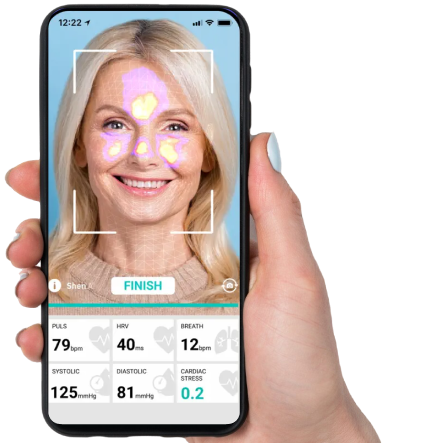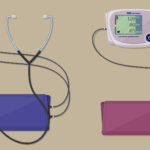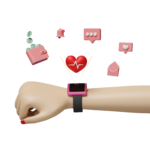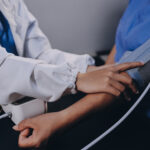Measuring your blood pressure when lying down on a bed may tell much more about your heart health than when measuring in the sitting position. Researchers at the Beth Israel Deaconess Medical Center in Boston have arrived to this conclusion, in result of a large, long-running study, the American Heart Association reports. The text below is based on this AHA report.
The medical scientists discovered that when compared with readings taken while someone was sitting, readings that showed high blood pressure in people who were lying down did a better job of predicting stroke, serious heart problems and even death.
The researcher’s surprise
Dr. Stephen Juraschek, senior researcher on the study, found the findings surprising. He suggested that having people lie flat to measure their blood pressure could potentially help identify people who need treatment despite seemingly normal readings taken while seated. Dr. Juraschek referred to the “gold standard” for accuracy, the ambulatory blood pressure. It takes readings throughout the day but requires wearing a monitor for 24 hours.
Researchers analyzed data from 11,369 participants in the Atherosclerosis Risk in Communities Study. The blood pressure had been measured while they were seated and also when they were lying down. The participants were divided into four groups. One group had normal blood pressure readings both when seated and lying down. One had high blood pressure only while sitting. The third, which made up 16% of participants, had high blood pressure only while lying down. And the fourth had high blood pressure in both positions.
Over time, the group without high blood pressure in either position had the lowest risk. The group with high blood pressure in both positions consistently was at high risk.
But unexpectedly, Juraschek said, the group that had high blood pressure only while lying down had risk levels similar to those with high readings in both positions. It happened even after accounting for other cardiovascular risk factors. People with lying-only high blood pressure had a 53% higher risk of coronary heart disease. They had 51% higher risk of heart failure. 62% higher risk for stroke. 78% higher risk of fatal coronary heart disease. And 34% higher risk of death from all causes compared to participants with normal blood pressure in both positions.
The risk of problems predicted by supine blood pressure, “in every single case, was more important than the seated, and in many cases was very close to having elevation in both,” Dr. Juraschek said.
The findings imply that checking supine blood pressure might unveil hypertension in some cases. Such situations include those missed in the doctor’s office, he said.
Possible reasons
The researcher did not design the study was to look at possible explanations for the differing readings. Dr. Juraschek named several factors potentially responsible for these findings. They ranged from ranging from the possibility that getting an accurate reading is easier when a patient is relaxed and lying down, to the physics of how fluids move around the body when it’s flat as opposed to seated.
With more studies and more information, supine blood pressure could help spot hypertension in people whose treatment is delayed because they’ve been “flying under the radar,” he said. It also could identify people who might not need treatment.
But for now, Juraschek said, monitoring seated blood pressure will remain key. “There’s such a large body of evidence about treatment of seated blood pressure that we just can’t ignore.”






